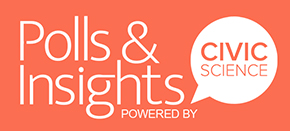In a recent survey conducted among 1,022 U.S. users of CivicScience’s digital properties, a significant portion of respondents reported experiencing seasonal allergies. The survey, which ran from April 1 to May 6, 2025, revealed that 30% of participants suffer from severe seasonal allergies, while 36% experience mild symptoms. Meanwhile, 31% of respondents reported no allergies at all.
One of the most striking distinctions between allergy sufferers and those without allergies lies in their living environments. Among those with severe allergies, 52% reside in suburban areas, compared to 37% of those without allergies. Conversely, 51% of non-allergy sufferers live in rural areas, a stark contrast to the 33% of severe allergy sufferers who do the same. This suggests a potential link between suburban living and heightened allergy symptoms.
Age also plays a role in allergy prevalence. For those with severe allergies, 19% are aged 18-24, and another 19% fall within the 45-54 age bracket. In contrast, 20% of non-allergy sufferers are aged 18-24, and another 20% are 65 or older. Interestingly, mild allergy sufferers are more likely to be 65 or older, with 23% falling into this age group.
Educational attainment varies among these groups as well. Among severe allergy sufferers, 26% hold a Bachelor’s degree, and 27% have a graduate or professional degree. Those with mild allergies are slightly more educated, with 33% holding a Bachelor’s degree and 29% possessing a graduate or professional degree. In comparison, 41% of non-allergy sufferers have a Bachelor’s degree, indicating a higher level of education among this group.
Income levels further differentiate these groups. Severe allergy sufferers are more likely to earn between $75,000 and $99,999, with 24% falling into this income bracket. Meanwhile, 24% of non-allergy sufferers report earning $400,000 or more, highlighting a significant income disparity between these groups.
Gender distribution remains relatively balanced across all groups. Among severe allergy sufferers, 49% are male and 51% are female. Mild allergy sufferers show a similar distribution, with 48% male and 52% female. Non-allergy sufferers are evenly split, with 50% male and 50% female.
Parental status also reveals differences. Among severe allergy sufferers, 26% are parents, while 30% are grandparents. In contrast, 41% of non-allergy sufferers are parents, and 21% are grandparents. This suggests that non-allergy sufferers are more likely to have children, while severe allergy sufferers are more likely to be grandparents.
These findings provide a comprehensive snapshot of the demographic and lifestyle factors associated with seasonal allergies. The data suggests that suburban living, certain age groups, and specific income levels may contribute to the prevalence of allergies. Understanding these distinctions can help inform public health strategies and improve the quality of life for allergy sufferers.
This article’s data comes solely from CivicScience’s database, which contains nearly 700,000 poll questions and 5 billion consumer insights. Our AI content creation tool, DataScribe, supported the article.


